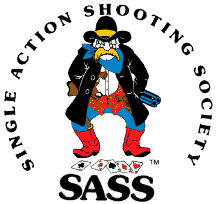 |
Law Enforcement Badges of the 1800's
Part 1 by "Rex Trailer" aka Neil Swendsboe of StarPacker Badges: Throughout recorded history the charge of upholding the Law of the Land has been the responsibility of the local Nobleman and his soldiers. With the Act of Posse Comitatus or Power of the County, the first step towards separating law enforcement from military duty was taken. The offices of Marshal, Sheriff, Constable and Police were made into civilian positions, but it is hardly surprising that their insignias of office reflect their heraldic origins as knightly decoration. Some of the earliest known American law enforcement badges were found in the larger East Coast cities. These followed the example of their English predecessors and were rayed stars as can be found in the first issue Boston and Baltimore badges. They were totally custom die-struck pieces, based on the Star Medallions of Chivalric Orders with raised lettering and the armorial bearings or seal of their City. These were well suited to the larger and financially well off Municipal Departments. As smaller Cities and Towns began to institute their own agencies to supplement the County Sheriff's Offices, a more cost-effective solution was sought. The plain five point, six point and seven point star badges made their appearance. These could be lettered with the City, Town, County and Department's name much more economically. The chivalric rayed star within a wreath badge became the five or six point star within a circle or crescent. At approximately the same time another type of badge was developing, this was the shield. Again, its origins were based on the armor carried by the Knights and Men at Arms that were modern law enforcements predecessors. It was not common for the Frontier Lawman of the mid-1800s to wear a badge. In small towns and villages where the citizens knew each other there was no need to identify the Constable or Town Marshal. But, as the cattle industry and mining brought new people to the Frontier Towns it became necessary to have a means of marking the local Peace Officer. Many Lawmen did not have access to a jeweler or badge manufacturer so they made their badges from the materials at hand. The tin star refers to badges cut from a tin can in the shape of a star or from the bottom of a can as a circle cutout star. Another popular method was to use a coin and cut out a star from the center. This was a common practice with Texas Rangers, who used the 1800s Mexican Ocho Reales (pieces of eight) coin in the manufacture of their badges. It is interesting to note that this practice was resurrected in 1962 when the Rangers resumed making their badges from 1940s Mexican Cinco Peso coins. With the western expansion of the latter 1800s the demand for quality law enforcement badges increased. In response to this demand badge makers sent out traveling salesmen or drummers equipped with stock lettered badges with the titles of Marshal, Sheriff or Deputy, as well as badge blanks and hand lettering sets so custom badges could be produced in the lawman's office. In addition several companies distributed mail-order catalogues, allowing custom badges to be ordered directly from the factory. In the mid 1880s badge manufacturers, who prior to this had been primarily located on the East and West coasts, began to appear in Missouri, Texas, Colorado, Nebraska and Oklahoma. The increased demand for their products plus the existence of a light industry infrastructure made this possible. Producing badges, more especially die-struck badges, was a complicated process. First the raw stock was cut into a blank. This blank could be gold (10 through 18Karat), gold-filled, sterling silver, german or nickel silver, bronze, brass or even copper. The latter three materials generally being plated a gold or nickel finish. The blank was then placed on a die and struck in a press. This process may have been repeated several times depending on the intricacy of the die. As the blank work-hardened with each strike it was necessary to heat and anneal it between each strike to make it soft enough to be struck again. Once the die pattern had been struck into the blank it was necessary to trim off the excess material. Again, this was done with presses set up with trimming and piercing tools. The badges were then lettered and again placed in a press for dapping, either ball dapped (domed) or oval dapped (curved). A pin was then soldered on the back and the badge was prepared for finishing. If the badge was to receive hard-fired or cloisonné enamellings, the enamel was placed in the letters and the badge was fired in an oven. The badge was then repolished, cleaned and readied for plating. Badges struck from non-precious metals received a finish of gold or nickel. Any regular or soft enamelling was then done and the badge was ready to wear. This was the procedure used in the 1800s and it has remained relatively unchanged to this day. There is no evidence to date of any period pieces that were castings. It was at this point that certain badge styles and configurations began to be associated with certain areas and agencies. These are topics that we hope to explore in future articles.
To be continued ... |
| Home |
 |